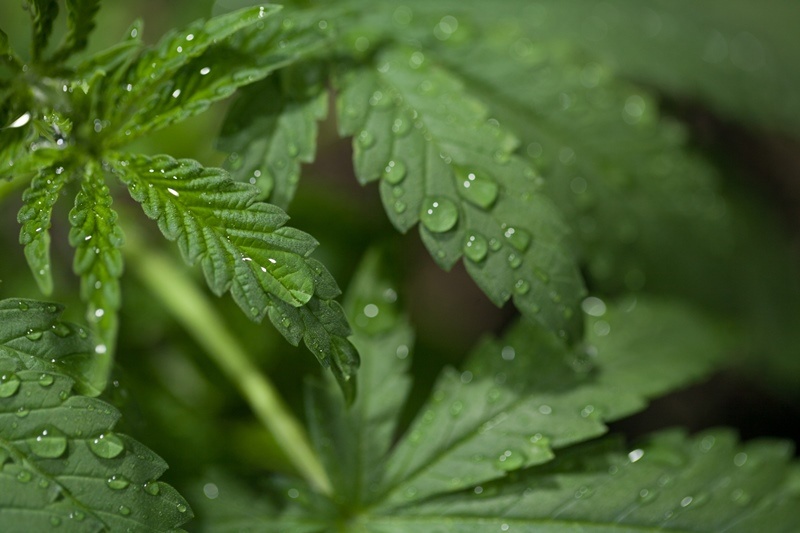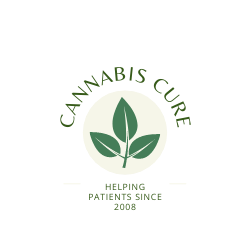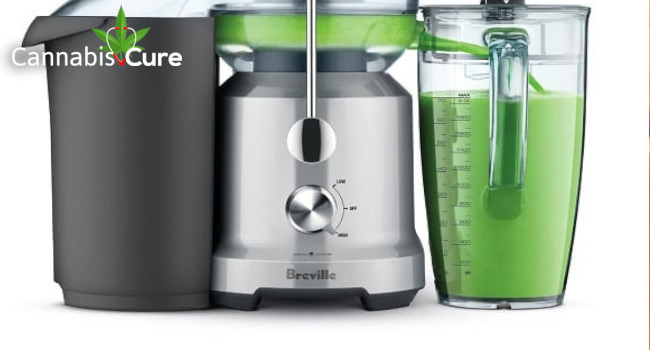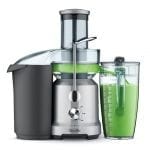Medical Cannabis – Juicing
This post assumes the reader already has access to Medical Full Spectrum Cannabis Oils. If this is not the case and you are attempting to source Cannabis Oil/RSO online please read our dedicated post offering advice on how to stay safe: Buying Full Spectrum Cannabis Oil/RSO online – Advice for UK and EU patients
Health Benfits Of Juicing Medical Cannabis
Combining fruits and vegetables with raw cannabis juicing is a great way of staying healthy.
However, the practice of liquidizing or juicing fruit and vegetables into a drink can cause gastrointestinal problems in some patients. A leading gastroenterologist has reported a rise in the number of his patients believing they have Irritable Bowel Syndrome (IBS) when in fact the cause is juicing high sugar fruits and vegetables.
Dr Jonathan Hoare, a consultant at St Mary’s Hospital, in London, has reported instances of patients unable to digest the sugars in fruit and vegetables, known as FODMAPs, which hit the gut faster if reduced to a liquid. This can cause IBS-type symptoms including, pain, bloating and diarrhea. not great if you are already fighting IBS or other gastrointestinal disorders.
Although some people can feel some discomfort from this it does not apply to juicing raw marijuana. To avoid any complications with FODMAPS or sugars, when combining fruits and vegetables to your cannabis juicing, ensure the ratio of vegetable to fruit is around 80% vegetable to 20% fruit.
How To Juice Medical Cannabis Leaves
Juicing is a great way for those growing their own cannabis medicines to utilize the fan leaves and small buds.
Many patients have gained significant benefit from juicing the fan leaves as well as flowers of fresh, raw, cannabis and it is a great way of introducing cannabinoids into your diet.
Juicing is different from the process of making smoothies. Juicing cannabis is accomplished with the use of a juicer, which extracts the juice from the raw cannabis leaves and flowers along with fruits and vegetables. Juicers can be expensive to purchase but if you intend to make marijuana juices on a regular basis they are a good investment to make.
This juice from leaves, trim, and buds contains a large number of cannabinoid acids, vitamins, minerals, soluble fiber, and phytonutrients from the plants, but excludes the insoluble fiber.
Smoothies are made with blenders and require some liquid as a mixer. With smoothies, you are ingesting the entire plant with higher fiber content. Proponents of juicing report that it:
- Boosts our immune systems.
- Improves our ability to absorb nutrients due to the removal of insoluble fiber.
- Improves digestion as a result of better access to digestive enzymes in plant foods.
If you suffer from any gastrointestinal issues it is important that you understand the effect of different vegetables and fruits.
Foods On The Fodmap Scale
Some people do not like the taste of raw, juiced cannabis.
Raw juiced cannabis can taste a little bitter, so it is better to combine it with other fruit and vegetables. However, if you have any gastrointestinal issues you need to be cautious about the vegetables and fruit you choose.
Consuming foods high in FODMAP results in an increased volume of liquid and gas in the small and large intestine, contributing to symptoms such as abdominal pain, gas and bloating, diarrhea and constipation.
Basically, eating the juiced concentrate of high-FODMAP foods can result in symptoms that you might not experience if you ate the food in isolation.
The following list will help you to prevent any possible stomach problems. Avoid grains, legumes, and dairy food if you are sensitive.
High Fodmap Foods To Be Avoided When Juicing Raw Medical Cannabis
The term FODMAP is an acronym, derived from “Fermentable Oligo-, Di-, Mono-saccharides And Polyols”.
FODMAPs are short-chain carbohydrates that are poorly absorbed in the small intestine. They include short-chain oligosaccharides polymers of fructose (fructans) and galactooligosaccharides (GOS, stachyose, raffinose), disaccharides (lactose), monosaccharides (fructose), and sugar alcohols (polyols), such as sorbitol, mannitol, xylitol, and maltitol. FODMAPs are naturally present in food.
A comprehensive list for FODMAP unfriendly (to be avoided) fruit and vegetables for juicing with cannabis.
Vegetables and Legumes
If you are sensitive to bloating and/or stomach complications then unfortunately Garlic is on the list despite its amazing health benefits.
Garlic – avoid entirely if possible
Includes garlic salt, garlic powder
Onions – avoid entirely if possible (Includes onion powder, small pickled onions)
Try Hing (Asafoetida powder or garlic oil to substitute), Artichoke, Asparagus, Baked beans, Bananas (ripe), Beetroot (fresh), Black beans, Black-eyed peas, Broad beans, Butter beans, Cassava, Cauliflower, Celery – greater than 5 cm of the stalk, Choko, Falafel, Fermented cabbage e.g. sauerkraut, Haricot beans, Kidney beans, Lima beans, Leek bulb, Mange Tout, Mixed vegetables, Mung beans, Mushrooms, Peas (sugar snap), Pickled vegetables, Red kidney beans, Savoy Cabbage, Soya beans, Split peas, Scallions/spring onions (bulb / white part), Shallots, Taro.
Fruit
Fruits can contain high fructose and if you are suffering from intestinal problems these should be avoided. Unfortunately, avocado, blackberries/ black currants, and apples are listed despite being low carbohydrate fruits.
Apples including a pink lady and granny smith, Apricots, Avocado, Blackberries, Blackcurrants, Boysenberry, Cherries, Currants, Custard apple, Dates, Feijoa, Figs, Goji berries, Grapefruit, Guava (unripe), Lychee, Mango, Nectarines, Pawpaw (dried), Peaches, Pears, Persimmon, Pineapple (dried), Plums, Pomegranate, Prunes, Raisins, Sea buckthorns, Sultanas, Tamarillo, Tinned fruit in apple/pear juice, Watermelon.

Fresh cannabis leaves are ideal for juicing.
Low Fodmap Foods Ideal For Juciing With Raw Medical Cannabis
A comprehensive list of FODMAP-friendly fruit and vegetables for juicing.
Vegetables and Legumes
All of these fruits and legumes are safe to use when juicing with cannabis if you suffer from any gastrointestinal problems.
Alfalfa, Bamboo shoots, Bean sprouts, Beetroot, canned and pickled, Bok choy / pak choi, Broccoli (whole – 1/2 cup), Broccoli (heads only – 3/4 cup), Broccoli (stalks only – 1/2 cup), Broccolini (whole – 1/2 cup chopped), Broccolini(heads only – 1/2 cup), Broccolini (stalks only – 1 cup), Brussels sprouts – 2 sprouts, Butternut squash – 1/4 cup, Cabbage, common and red up to 1 cup, Callaloo, Carrots, Celeriac, Celery – less than 5 cm of the stalk, Chicory leaves, Chickpeas – 1/4 cup, Chilli – if tolerable, Chives, Cho Cho – 1/2 cup diced, Choy sum, Collard greens, Corn / sweet corn – if tolerable and only in small amounts – 1/2 cob, Courgette, Cucumber, Eggplant/aubergine, Fennel, Green beans, Green pepper / green bell pepper / green capsicum, Ginger, Kale, Karela, Leek leaves, Lentils – in small amounts.
Lettuce: Butter lettuce, Iceberg lettuce, Radicchio lettuce, Red coral lettuce, Rocket lettuce, Romaine/Cos lettuce, Marrow.
Okra, Olives, Parsnip, Peas, snow – 5 pods, Pumpkin, Pumpkin, canned – 1/4 cup, 2.2 oz, Radish, Red peppers / red bell pepper / red capsicum, Scallions/spring onions (green part), Seaweed/Nori, Silverbeet/chard, Spinach, Squash, Swede, Swiss chard, Sweet potato – 1/2 cup, Tomato – canned, cherry, common, roma, Turnip, Yam, Zucchini.
Fruit
These fruits make a great addition to any cannabis juice and are recommended for gastrointestinal issues.
Bananas (unripe), Bilberries, Blueberries, Breadfruit, Carambola, Cantaloupe, Cranberry – 1 tbsp, Clementine, Dragon fruit, Lingonberries, Grapes, Guava (ripe), Honeydew and Galia melons, Kiwifruit, Lemon including lemon juice, Lime including lime juice, Mandarin, Orange, Passion fruit, Pawpaw, Papaya, Pineapple, Raspberry, Rhubarb, Strawberry, Tamarind, Tangelo.
Why Juice Raw Medical Cannabis?
Cannabis is technically a vegetable with many of the same nutrients as other leafy greens.
The primary benefit of juicing raw cannabis is that it enables you to take in much larger amounts than you would be able to by other methods of administration.
Also and more importantly, juiced, raw cannabis does not have the same psychoactive effects as decarboxylated cannabis where the THCA is converted to THC, whilst containing iron and calcium coupled with the perfect balance of fatty acids.
The high concentration of raw cannabinoid acids in juiced cannabis help improve cell function and reduce free radicals. Additional benefits of raw, juiced cannabis include reduced inflammation and anti-tumor properties.https://www.youtube.com/embed/DE4pK0U4NJo?rel=0&showinfo=0&enablejsapi=1&origin=https:%2F%2Fcannabiscure.info
Android phone? Best viewed in landscape.
According to Dr. William Courtney, a dietary raw cannabis specialist and a strong believer in the plant’s healing powers, “you are actually walking away from 99% of the benefits cannabis provides when you cook or smoke cannabis.”
In its raw form, the cannabis plant contains tetrahydrocannabinol-acid (THCA) and Cannabidiolic-acid CBDA, two cannabinoids. Only when you decarboxylate THCA, turning it into THC, does it cause psychoactive effects or high most associated with smoking cannabis. Additionally, the body is able to tolerate larger dosages of cannabinoids when cannabis is consumed in the raw form. This is because when you smoke cannabis, the THC actually acts as a CB1 receptor agonist and your body can only absorb ~10 mg at a time.
How To Juice Your Raw Medical Cannabis?
You can juice almost any part of the plant, especially all of the leaves and smaller buds.

However, it is important to remember that the benefits are obtained from using the plant material fresh, in its raw state.
Juicing requires raw, freshly-picked organically grown cannabis with no pesticides or other microbiological contaminants. Dried and cured cannabis is of no use when juicing.
The stems and roots are not used as they are very fibrous, but pretty much anything else can be utilized. If you want to ingest more THCA and CBDA cannabinoids then the female flowers are used and these too need be picked and added fresh to your juicer.
Leaves are picked fresh from the plant and added in just the same way. The downside of juicing is patients need access to a large number of cannabis plants.
Juiced marijuana should always be diluted, preferably with vegetable or fruit juice, as it will taste bitter (see FODMAP above).
- Juicing cannabis has no health risk, however, be careful to watch your FODMAP (sugar) intake.
- Dr. William Courtney recommends 15 leaves, and 2 large (2 to 4 inches long) raw buds per day.
- It is recommended that you mix in another vegetable juice to cut the bitterness of the raw cannabis.
- A recommended choice is carrot juice, at a ratio of 1 part raw cannabis juice to 10 parts carrot juice.
- Split the juice drink into 3 servings and consume with each meal.
- Raw cannabis juice can be stored for up to 3 days in an airtight container in the refrigerator.
The leaves can be taken at any time during the growth cycle but the flowers are picked nearer the end of the plant’s life cycle when most of the cannabinoids have been produced and THC crystals are prevalent on the buds.
Who Can Benefit The Most From Juciing Cannabis?
Juicing can benefit everyone, however, it is particularly useful for those who avoid inhalation delivery.
For people who want to avoid smoking or even vaporizing, juicing raw marijuana is a tasty and very effective way to absorb your cannabinoids.
Without heating the plant, the psychoactive cannabinoids are not activated or released.
This means that a glass of juiced cannabis won’t get you high so you are safe to drive or operate machinery during the day and it’s a great way to medicate your kids.
However, you do want to be careful with the fruits and vegetables you choose to mix into the raw cannabis juice. Try to choose those listed on the low FODMAP scale to be sure you limit any possible stomach problems.
Further reading
Everything you need to know about Cancer-fighting Foods
How and where to safely buy RSO medical cannabis oil online
Help and Advise
If you need advice or help with Medical Cannabis, please use the contact form provided. We try to answer all emails within 24 hours and are happy to help and advise on all aspects of medical cannabis treatments in complete confidence.
Disclaimer: Please note that whilst we consider ourselves subject matter experts regarding medical cannabis, we are not medical professionals. We are an information resource and there is still limited evidence that medical cannabis can cure all the illnesses we discuss here. We recommend you do as much research as possible, and where practical seek professional medical advice before proceeding with Medical Cannabis oil.




